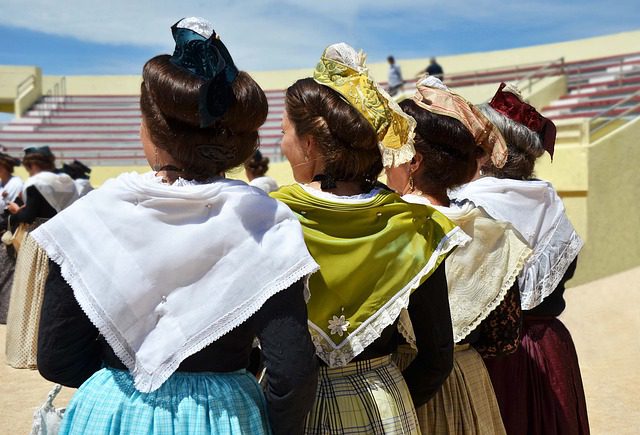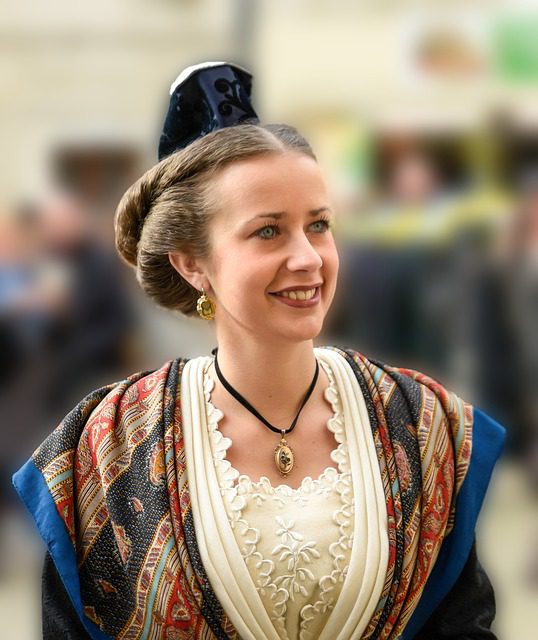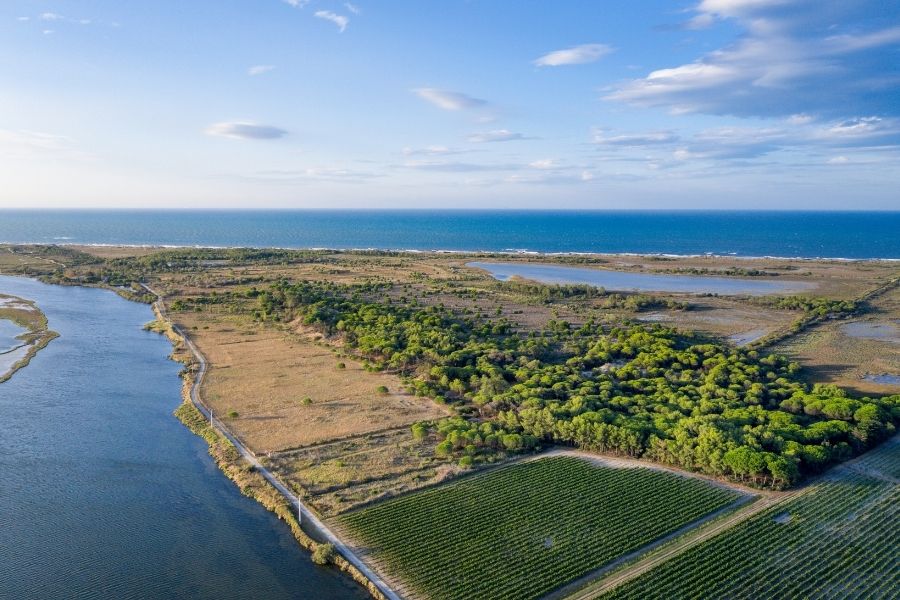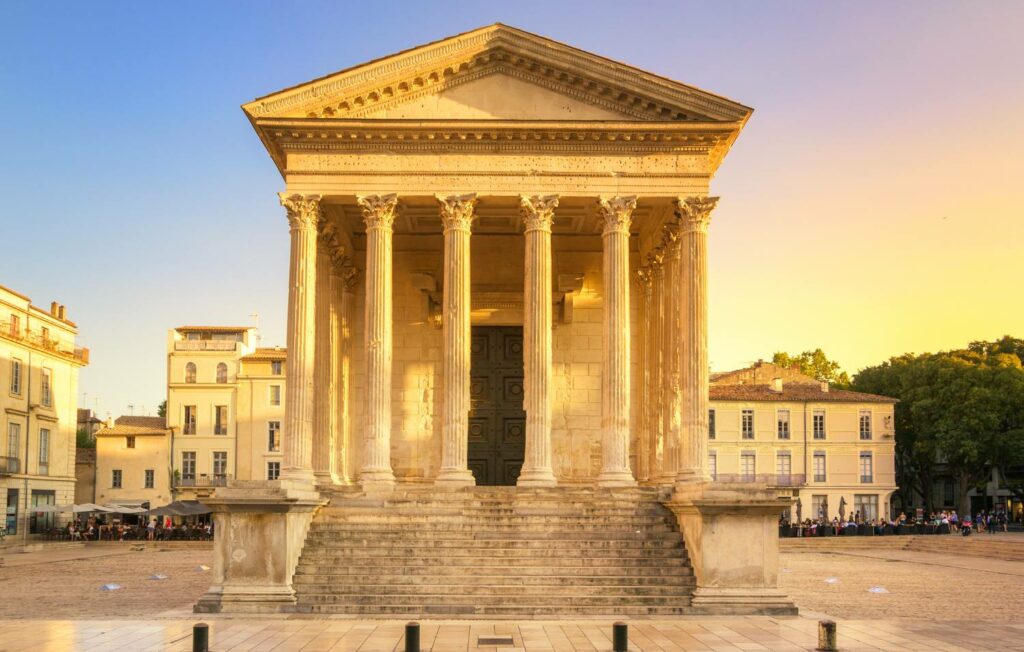Last update:
Camargue: Must See Area of Southern France That Will Surprise You


For most of us, traveling to Southern France evokes thoughts of idyllic seaside resorts, flowers blowing in breezes, and dining on exquisite seafood. World travelers often overlook the picturesque rice paddies, horses, bulls, and ecotourism. You can discover this special area with a visit to a region known as Camargue. This article shares what Camargue is known for and why it’s a must see area of Southern France.

Where is Camargue located?
Camargue is a triangular-shaped natural region in Southern France bordered by the Mediterranean Sea and the two arms of the Rhône delta: the Grand Rhône to the east and the Petit Rhône to the west.
Arles is the northernmost city of Camargue. It’s situated on the Rhône River in the Provence Region. Arles is best known for inspiring artist Van Gogh’s paintings. Once a major city of ancient Rome, Arles has several historic ruins to see from this era such as les Arènes d’Arles (Arles Amphitheatre). The amphitheater still hosts concerts, plays, and bullfights.
The Petit Camargue is the western section of the region and the location of the town of Aigues-Mortes, population 8,000. Aigues-Mortes is a medieval city that still has 13th-century walls and a huge round tower. The city has a long history that dates back to 100 BC and may have been inhabited by the Romans. Salt-mining was practiced long before this time and still is. The current salt-mining area is called the Salins du Midi.
At one time, Aigues-Mortes was involved with French kings. It was a seaport town and a key defense site. The 7th and 8th crusades to Jerusalem departed from here during the 13th century. Time, water movement, and development by humans changed the seaport town so that only the canals and the town of Le Grau-du-Roi separate it from the Mediterranean Sea.



Protected Natural Area: Europe’s largest river delta.
Camargue’s land area of over 930 km2 (360 sq mi) makes it the largest river delta in Western Europe. Since it’s a listed-UNESCO reserve, the land and its wildlife are protected. Additionally, this end of the coast isn’t heavily traveled by tourists. These factors have allowed the region to flourish with a lesser-known profile.
The delta has been a hidden natural gem for decades, and the wetlands are a haven for nature buffs interested in the unique wildlife. The region is famous for wild white horses, pink flamingos, and black bulls, and is home to over 400 species of birds. Visitors who come here soon discover that the Camargue is a biosphere. Horseback riding tours leave the trails and take them to the marshlands to get immersed in the surrounding flora and view rare fauna that tends to avoid roads and trails with traffic.
The animals that graze the marshlands are raised in semi-feral conditions. They roam across the delta in a “manade“, or free-running herd. The animals serve as a guardian of the herds and the land.

Bulls and horses: an ancient tradition
Bulls are often used for sport in the delta, and unlike Spain, Southern France honors the bull as the hero of the sport rather than hurting or killing it. Course Camarguaise, translated literally as Camargue racing, is a unique game of risk in which men called raseteurs try to win a footrace with bulls while grabbing and removing tassels from their horns.
Bull races events are held from spring through autumn at the local arenas in and near the Camargue. The human interactions and games with the bulls have created a culture of La Bouvine or the “world of bulls.” The culture includes the breeders, the cowboys on their white horses, and the townspeople who run with the bulls at local festivals.




The graceful white horses roaming wild on the delta are from one of the oldest breeds. The local cowboys use some of the horses for herding and rounding up the black bulls while others are semi-wild. Like the bulls, the horses are revered and respected. They receive a special blessing in a ceremony that is part of a traditional celebration called Gardian Day celebrated annually on the first day of May.


Agricultural land
The land here is known for more than bulls and cowboys and their horses.
Not only have humans survived on the delta, they have flourished for more than a thousand years. They did this by building dams and drainage, rice paddies, and saltpans that are still functioning today. Rice and salt have been harvested here since the middle ages.
The region is ideal for growing rice thanks to an abundance of sunshine, fresh water from the Rhône River, and mistral wind, a dry, cold wind that blows from the north along the lower river valley toward the Mediterranean Sea. The rice fields cover about 15,000 hectares (37,000 acres) of land.
Red rice is a popular product in the area. A bag of it is an excellent souvenir to take home from Southern France. The organic rice is delicious in curries and has lots of healthy antioxidants.
Fruits and vegetables also grow well here, and fields of sunflowers add to the region’s stunning beauty. Vineyards have been cultivated in the region since the 14th century. Vin de Camargue isn’t known internationally but is interesting and delicious. Most wines from the region are rosés or gris de gris, a shade of pink that is almost grey.
Perhaps the most unusual wine found here is Vin des Sable. “Sand wine” is produced in sea sands. The sandy soil and salt air speed up the maturation of the grapes creating a unique flavor.


The harvesting of salt has been important to this region of Southern France since Roman times and remains so today. Salt from the marshes is harvested from the tidal marshes of Aigues-Mortes for personal consumption but also chemical, industrial, and pharmaceutical uses. The production begins in the spring when the tides bring fresh water from the sea inland through a series of canals. Light winds and sunlight help the evaporation process making the water even saltier. The final mixture is spread out over a clay pond and the surface of the water becomes saturated with a culinary delicacy known as fleur de sel or “flower of salt.” The fleur de sel is the top layer of salt that crystalizes when the days start to get hot but the nights are still cool, usually around the end of June. It is harvested by hand as it is very delicate. The rest of the salt will be harvested at the end of the summer.
This refined salt with a minerality and crunch is the perfect finish touch on your fresh tomatoes or grilles meat. You can get the fleur de sel from Aigues-Mortes here on Amazon. (affiliate link)
Aigues Mortes is also visited for its historical significance. Take a day to explore the walled medieval town from the 1200s that King Louis IX had built. The first French port on the Mediterranean Sea, the city features medieval architecture and was a sanctuary for Protestants during the 14th and 15th centuries. Huge towers served as prisons for citizens who denied Roman Catholicism during the late 17th century. When the French king annexed Provence and Marseille, the town lost its trading rights but thanks to its strategic location, Aigues Mortes retained its military credentials.
Beauty, tradition, history, and wildlife are a few of the reasons that make the Camargue Region a must see area of Southern France. Come and experience up close the proud white horses, stout black bulls, and graceful flamingos against the backdrop of the pink-hued salt marsh near the Rhone River and the Mediterranean Sea.
Want to go to Southern France?
Check out our “Travel Like a Local” small group tours!











